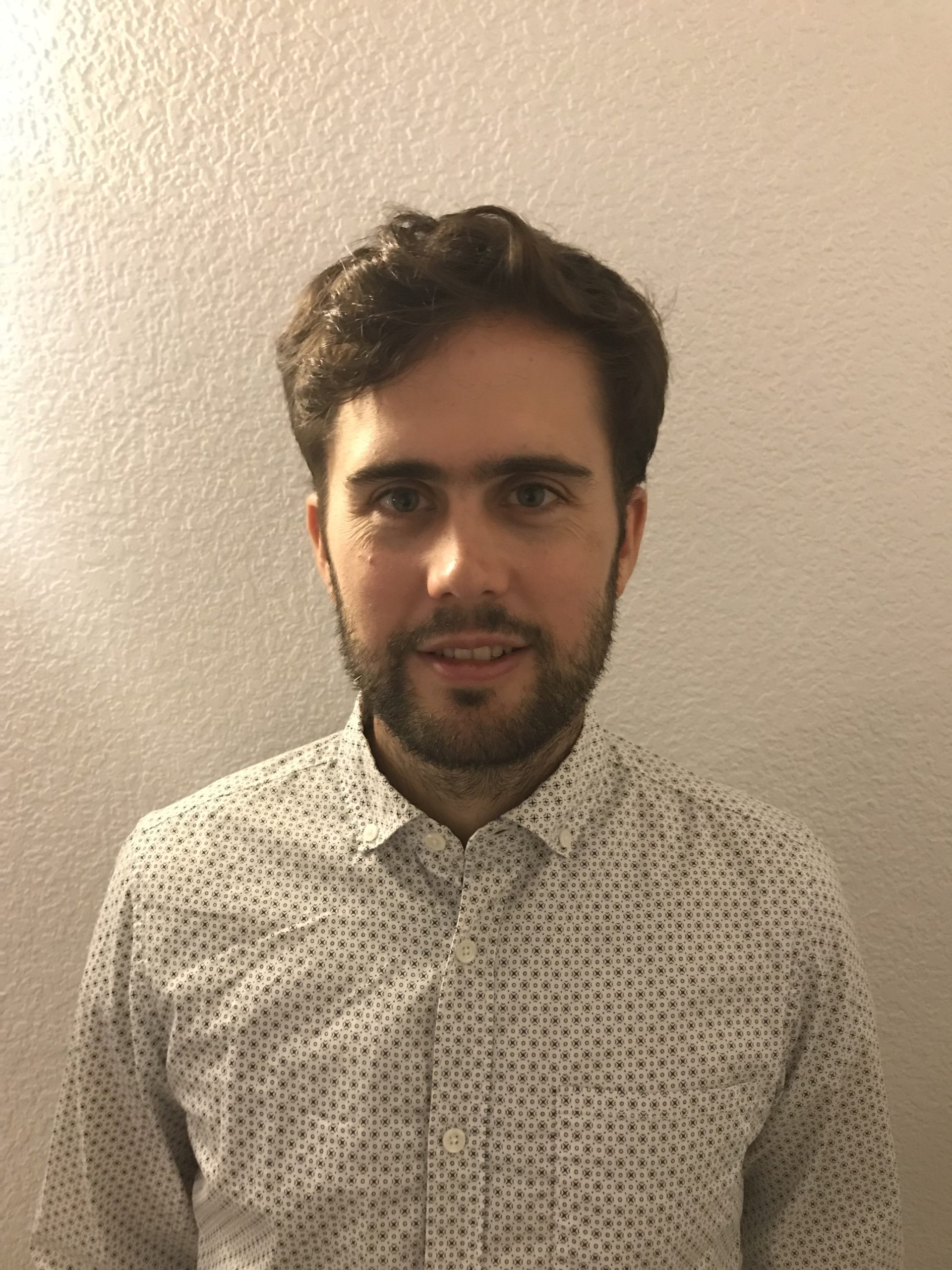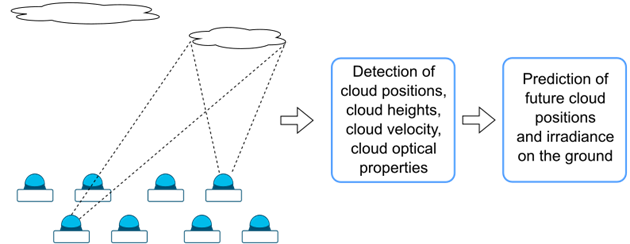
Short-term forecasting using all-sky imager networks
Niklas Blum is currently a researcher at German Aerospace Center (DLR), working on short-term renewable energy forecasting. He has been contributing to the project since its beginning, developing a novel forecasting system which employs a network of sky-facing cameras.
In the future, our distribution grids will be penetrated with power from a large number of PV installations. As the production of PV installations can change rapidly as the sky conditions change, the stability of the power grid can be affected. This may create the need for costly investments in grid-infrastructure. On the other hand, forecasts of the solar irradiance available to PV installations can help to avoid such investments if imbalances between production and consumption are mitigated e.g. by managing batteries wisely or controlling heat pumps and other consumers.
All-sky imagers, i.e. sky-facing fisheye cameras, are a promising option to provide short-term forecasts with a high temporal and spatial resolution which are suited to nowcast the PV production within the small transformer districts of an urban distribution grid. So far, such systems mainly employed a small number of up to four all-sky imagers. These setups created limitations regarding the spatial coverage, accuracy and lead times which the forecasts could achieve.
Figure 1: Working principle of a forecast based on a network of all-sky imagers
In the Smart4RES project, Niklas Blum developed a forecasting system which includes a whole network of all-sky imagers. This network named Eye2Sky is set up in northwestern Germany around Oldenburg. Currently, the network includes 29 all-sky imagers distributed over an area of 110 km x 100 km. Dedicated algorithms were developed to combine the observations from the individual all-sky imagers of Eye2Sky. Regarding spatial coverage, accuracy and achieved lead times, the resulting forecast could outperform previous forecasting methods based on all-sky imagers noticeably.
More about Niklas Blum
On his background
Niklas Blum graduated in Engineering Science (Technische Universität Berlin). Since 2018 he has been working as a PhD candidate at German Aerospace Center, Institutes of Solar Research and Networked Energy Systems. The topic of his PhD thesis is the development of a short-term forecasting system based on the Eye2Sky all-sky imager network.
On his research interests
Solar energy meteorology; atmospheric observations and forecasting based on all-sky imagers; measurement techniques of solar irradiance
On choosing Smart4RES and the German Aerospace Center for his research
German Aerospace Center offers a unique infrastructure that allows us to work on the major research topics of our time. “The Institutes of Solar Research and Networked Energy Systems are dedicated to the topics that occupy and drive me personally. My working group offers colleagues and a working environment that make every working day varied, motivating and exciting. Smart4RES gave me the possibility to realize the research which I planned for my PhD thesis”.
Where he sees himself in 5 years
“In five years, I see myself in a European Union where cars are electric and renewables provide a large part of our energy needs. By then, we will already have solved many of our current challenges in the energy transition. I hope that I will contribute to solving the remaining ones”.

